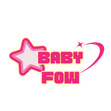When Can Babies Eat Cheese?
Introduction
Introducing new foods to your baby is an exciting milestone. One common question parents have is, when can babies eat cheese? Cheese is delicious and nutritious, but it’s essential to know the right time and way to introduce it to your little one. In this article, we will explore everything you need to know about giving cheese to babies.
Why Cheese?
Cheese is a great source of essential nutrients such as calcium, protein, and vitamins. These nutrients are crucial for your baby’s growth and development. However, it’s important to ensure that cheese is introduced at the right time and in the right way.
The Right Age to Introduce Cheese
According to pediatric guidelines, babies can start eating cheese around 6 to 8 months of age. Here’s a breakdown of what you need to know:
- Six Months: At six months, your baby is typically ready for solid foods. This is also the time when you can introduce cheese in small amounts. Start with mild cheeses like mozzarella or cottage cheese.
- Eight Months and Beyond: By eight months, your baby can handle a wider variety of cheeses. You can introduce more flavorful options like cheddar or Swiss.
Types of Cheese Suitable for Babies
Not all cheeses are suitable for babies. Here are some baby-friendly options:
| Age | Cheese Types | Notes |
|---|---|---|
| 6-8 months | Mozzarella, Cottage | Mild, soft cheeses; ensure they are pasteurized |
| 8-12 months | Cheddar, Swiss | Introduce more flavorful options |
| 12 months+ | Brie, Camembert | Ensure soft cheeses are pasteurized and start in small amounts |
- Mozzarella: Soft and mild, making it a perfect first cheese.
- Cottage Cheese: High in protein and easy to digest.
- Cheddar: Offers a richer flavor and is packed with nutrients.
- Swiss: Another mild option that is easy to chew.
How to Introduce Cheese
Introducing cheese to your baby should be done gradually. Follow these steps to ensure a smooth transition:
- Start Small: Begin with small amounts to see how your baby reacts. A tiny piece or a teaspoon of shredded cheese is a good starting point.
- Monitor for Allergies: Watch for any signs of allergic reactions such as rashes, swelling, or digestive issues.
- Incorporate into Meals: Mix cheese with other foods your baby already enjoys. For example, add shredded cheese to mashed vegetables or sprinkle it over pasta.
Benefits of Cheese for Babies
Cheese offers several health benefits for babies:
- Rich in Calcium: Essential for strong bones and teeth.
- High in Protein: Supports muscle growth and repair.
- Source of Vitamins: Provides vitamins A and B12, important for vision and brain development.
- Probiotics: Some cheeses contain probiotics, which are beneficial for gut health.
Potential Risks and Considerations
While cheese is nutritious, there are a few potential risks and considerations to keep in mind:
- Choking Hazard: Ensure cheese is cut into small, manageable pieces to prevent choking.
- Salt Content: Some cheeses are high in salt. Opt for low-sodium varieties to avoid excessive salt intake.
- Lactose Intolerance: Some babies may be lactose intolerant. If your baby shows signs of lactose intolerance, consult your pediatrician before continuing with cheese.

Frequently Asked Questions
1. Can I give my baby soft cheeses like Brie or Camembert?
Soft cheeses made from pasteurized milk are generally safe. However, they can be high in fat and may contain more salt. It’s best to introduce them later, around 12 months or older.
2. How much cheese can I give my baby?
Start with small amounts and gradually increase. A serving size of about 1 to 2 ounces per day is appropriate for babies and toddlers.
3. Can cheese cause constipation in babies?
Cheese can be constipating for some babies due to its high calcium content. Ensure your baby has a balanced diet with plenty of fruits, vegetables, and water to avoid constipation.
Best Cheese Options for Different Ages
| Age | Cheese Types | Notes |
|---|---|---|
| 6 months | Mozzarella, Cottage | Start with small amounts and ensure it is pasteurized |
| 7 months | Mild Cheddar, Swiss | Choose low salt cheese options |
| 8 months | String Cheese, Low-Sodium Hard Cheese | Monitor for choking hazards with string cheese |
| 9 months | Cottage Cheese, Cheddar | Introduce more textures and flavors |
| 10 months | Various Cheeses Including Soft Cheeses | Offer a variety to explore different textures and flavors |
Incorporating Cheese into Baby’s Diet
Here are some simple and tasty ways to incorporate cheese into your baby’s diet:
Cheese and Veggie Puree
- Ingredients:
- 1 small carrot, peeled and chopped
- 1 small potato, peeled and chopped
- 2 tablespoons grated cheddar cheese
- Instructions:
- Steam the carrot and potato until soft.
- Mash them together and stir in the cheese until melted.
- Serve warm.
Cheesy Pasta
- Ingredients:
- 1/2 cup small pasta (like mini shells)
- 1/4 cup grated mozzarella
- 1 tablespoon unsalted butter
- Instructions:
- Cook the pasta according to the package instructions.
- Drain and return to the pot.
- Stir in the butter and cheese until melted.
- Serve warm.
Cheese and Fruit Snack
- Ingredients:
- 1/4 cup cottage cheese
- 1/4 cup diced soft fruits (like peaches or pears)
- Instructions:
- Mix the cottage cheese with the diced fruits.
- Serve as a healthy snack.
Safety Tips for Introducing Cheese
- Check Labels: Always check for pasteurization and sodium content.
- Observe Baby’s Reaction: Keep an eye out for any adverse reactions when introducing a new type of cheese.
- Serve Appropriately: Cut cheese into small pieces or shred it to avoid choking hazards.
Summary Table: Introducing Cheese
| Cheese Type | Suitable Age | Serving Size | Notes |
|---|---|---|---|
| Mozzarella | 6 months | Small pieces or shredded | Mild and easy to digest |
| Cottage Cheese | 6 months | 1-2 tablespoons | High in protein, mix with fruits |
| Mild Cheddar | 7 months | Small pieces or grated | Rich in nutrients, low salt preferred |
| Swiss | 7 months | Small pieces or shredded | Easy to chew, mild flavor |
| String Cheese | 8 months | Small pieces | Monitor for choking, fun to eat |
| Low-Sodium Hard Cheese | 8 months | Grated or shredded | Opt for low-sodium options |
| Cheddar | 9 months | Small pieces or melted | Introduce more textures and flavors |
| Soft Cheeses (Brie, Camembert) | 12 months | Small amounts occasionally | Ensure pasteurized, high in fat |
Final Thoughts
As a parent, it’s natural to have concerns about introducing new foods to your baby. Cheese can be a wonderful addition to your baby’s diet, offering essential nutrients and new flavors. Always start with small amounts, choose appropriate types, and monitor your baby’s reaction. With these steps, you can confidently introduce cheese and enjoy watching your baby explore the world of solid foods.
READ MORE :
Baby food recipes 9 to 12 months.
Bonus:
Incorporating Cheese into Baby’s Daily Meals
Adding cheese to your baby’s diet can be both nutritious and enjoyable. Here are some additional ways to include cheese in their daily meals:
Cheesy Mashed Potatoes
- Ingredients:
- 1 small potato, peeled and chopped
- 2 tablespoons grated cheddar cheese
- 1 tablespoon unsalted butter
- Instructions:
- Boil the potato until soft.
- Mash the potato with butter.
- Stir in the grated cheese until melted.
- Serve warm.
Cheese Omelet
- Ingredients:
- 1 egg
- 2 tablespoons grated cheese (mozzarella or cheddar)
- 1 teaspoon butter
- Instructions:
- Beat the egg in a bowl.
- Melt the butter in a small pan over medium heat.
- Pour the egg into the pan and cook until it starts to set.
- Sprinkle the cheese over the egg and fold it into an omelet.
- Cook until the cheese is melted and the egg is fully cooked.
- Cool slightly before serving.
Cheese and Vegetable Mini Muffins
- Ingredients:
- 1/2 cup grated cheese (cheddar or mozzarella)
- 1/2 cup finely chopped vegetables (like spinach or carrots)
- 1 cup flour
- 1 teaspoon baking powder
- 1/2 cup milk
- 1 egg
- Instructions:
- Preheat the oven to 350°F (175°C).
- Mix the flour and baking powder in a bowl.
- In another bowl, beat the egg and mix in the milk.
- Combine the wet and dry ingredients, then fold in the cheese and vegetables.
- Spoon the batter into a greased mini muffin tin.
- Bake for 15-20 minutes or until golden brown.
- Cool before serving.
Nutritional Benefits of Cheese
Cheese provides several key nutrients that are important for your baby’s development:
| Nutrient | Benefit | Cheese Sources |
|---|---|---|
| Calcium | Essential for bone and teeth health | Mozzarella, Cheddar, Cottage Cheese |
| Protein | Supports muscle growth and repair | Cottage Cheese, Cheddar, Swiss |
| Vitamin A | Important for vision and immune system | Cheddar, Swiss |
| Vitamin B12 | Crucial for brain development | Swiss, Cheddar |
| Probiotics | Beneficial for gut health | Some types of yogurt cheese |
Handling Allergies and Intolerances
It’s important to be aware of potential allergies and intolerances when introducing cheese to your baby:
- Milk Allergy: If your baby is allergic to cow’s milk, they may also react to cheese. Symptoms can include hives, vomiting, or diarrhea. Always consult with your pediatrician before introducing dairy products.
- Lactose Intolerance: Some babies may have difficulty digesting lactose, the sugar found in milk. Symptoms include gas, bloating, and diarrhea. If you suspect lactose intolerance, talk to your pediatrician.
Signs of Allergy or Intolerance
| Symptom | Possible Cause |
|---|---|
| Hives or Rash | Milk Allergy |
| Vomiting or Diarrhea | Milk Allergy |
| Gas, Bloating, Diarrhea | Lactose Intolerance |
Alternatives to Traditional Cheese
If your baby cannot tolerate traditional cheese, there are alternatives that can provide similar benefits:
- Lactose-Free Cheese: Made to be easier to digest for those with lactose intolerance.
- Vegan Cheese: Made from plant-based ingredients and free from dairy. These can be a good option for babies with milk allergies.
Monitoring and Adapting
When introducing cheese, keep track of any reactions or changes in your baby’s health. Maintain a food diary to note what foods your baby eats and any reactions they have. This can help you identify and address any allergies or intolerances early on.
Sample Feeding Schedule with Cheese
Here is a sample feeding schedule incorporating cheese into your baby’s meals:
| Meal | Time | Food Item |
|---|---|---|
| Breakfast | 8:00 AM | Cheese Omelet, Soft Fruit Pieces |
| Snack | 10:00 AM | Cottage Cheese with Diced Fruit |
| Lunch | 12:00 PM | Mashed Potatoes with Cheddar |
| Snack | 3:00 PM | String Cheese |
| Dinner | 6:00 PM | Cheesy Veggie Puree |
Conclusion
Introducing cheese to your baby’s diet can be a delightful and nutritious experience. By starting at the right age and choosing appropriate types, you can ensure your baby enjoys the benefits of cheese without any risks. Always keep an eye out for allergies and consult your pediatrician if you have any concerns. Enjoy watching your little one discover new flavors and textures with cheese!
Final Thoughts
As a parent, it’s natural to have concerns about introducing new foods to your baby. Cheese can be a wonderful addition to your baby’s diet, offering essential nutrients and new flavors. Always start with small amounts, choose appropriate types, and monitor your baby’s reaction. With these steps, you can confidently introduce cheese and enjoy watching your baby explore the world of solid foods.









Pingback: When Can Babies Have Fish? - Babyfow.com
I like the comprehensive information you provide in your blog. The topic is kinda complex but I’d have to say you nailed it! Look into my page QN9 for content about Thai-Massage.